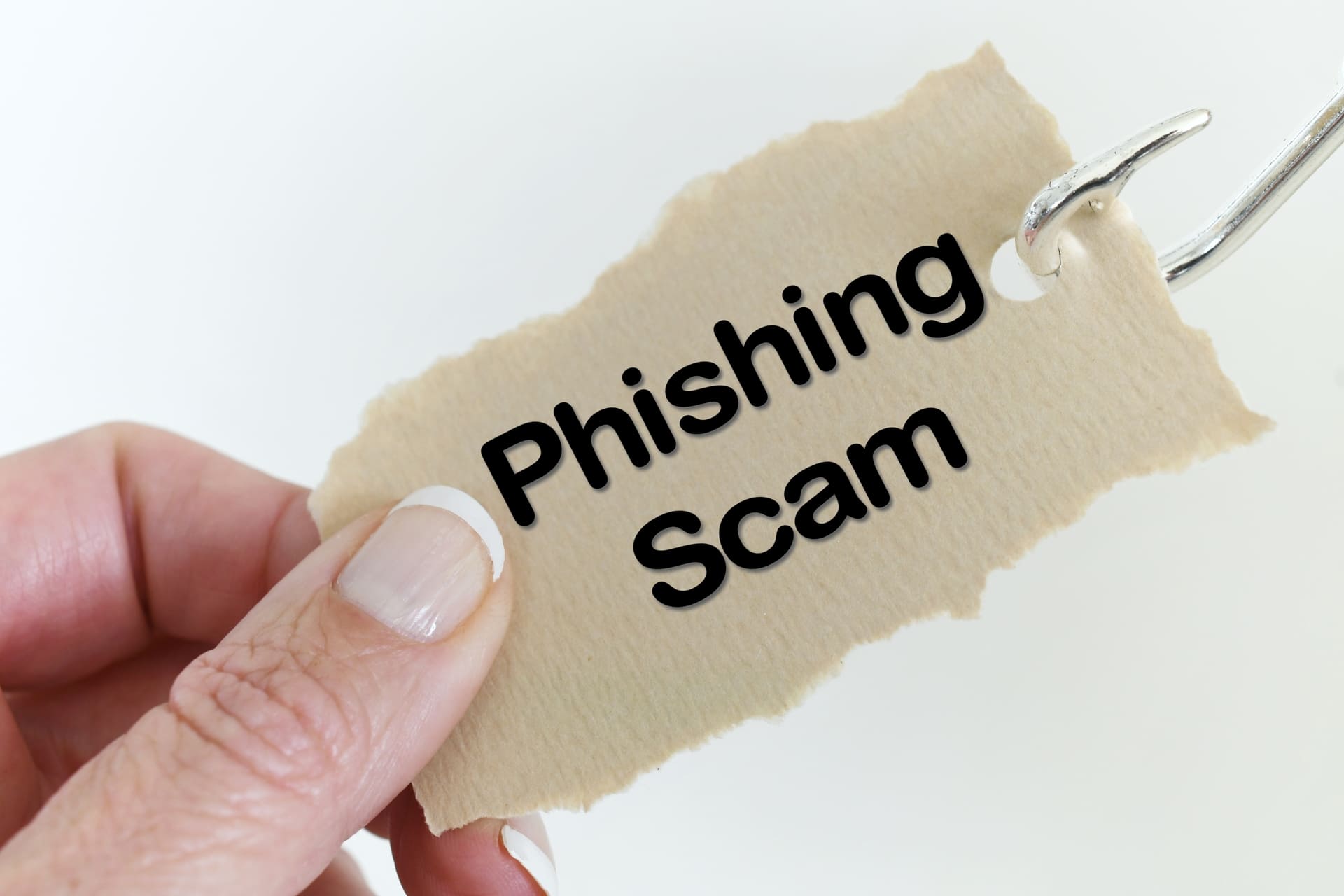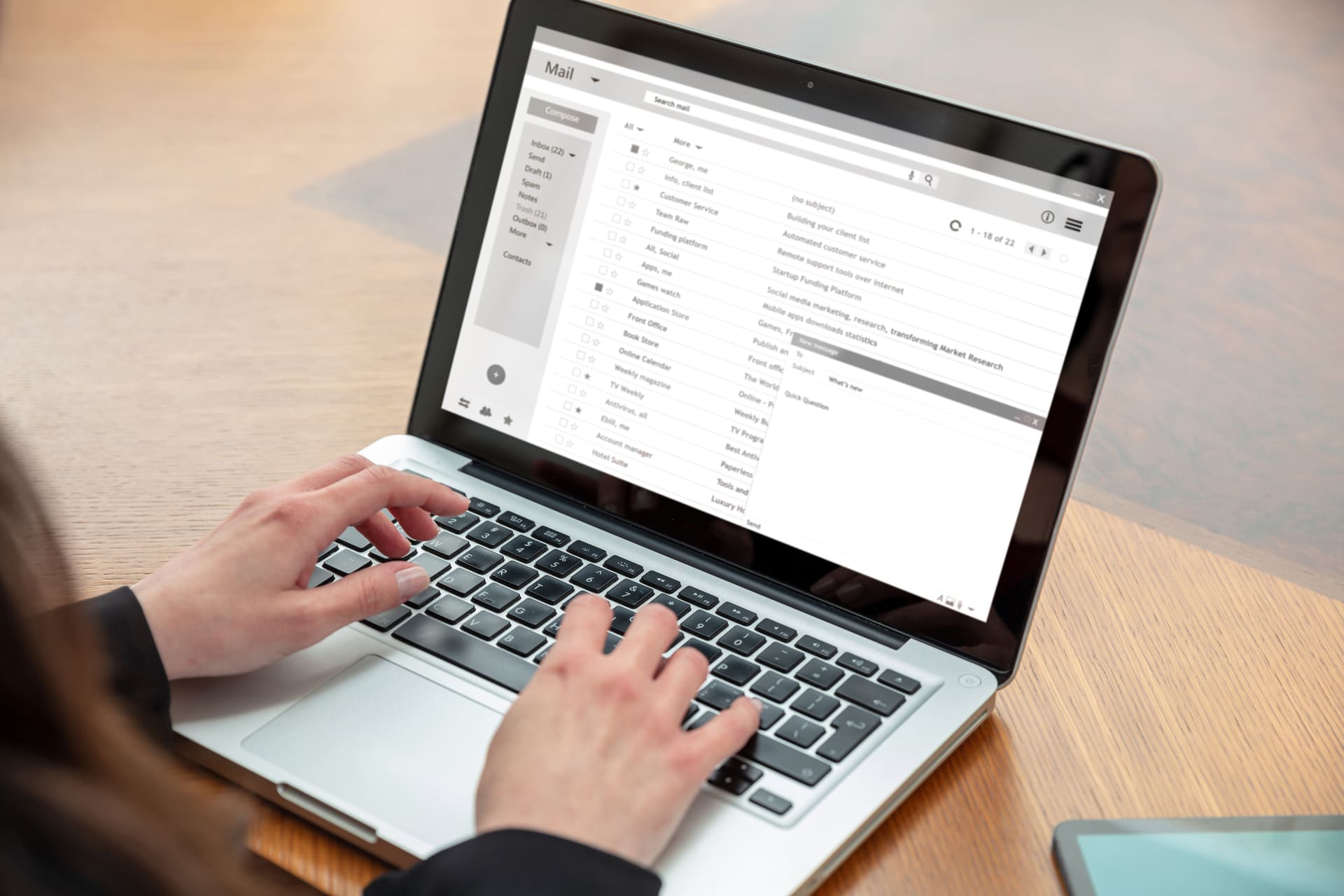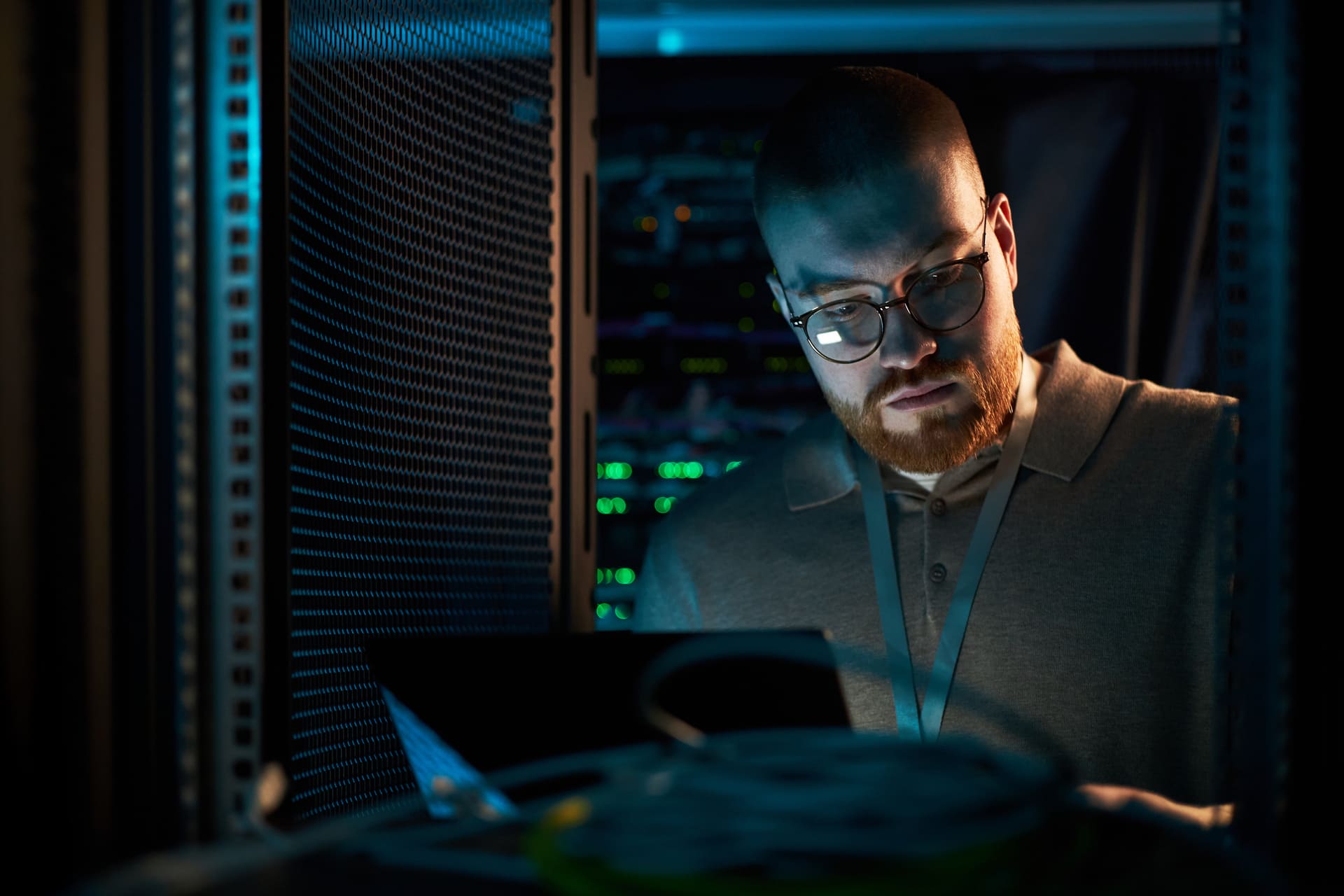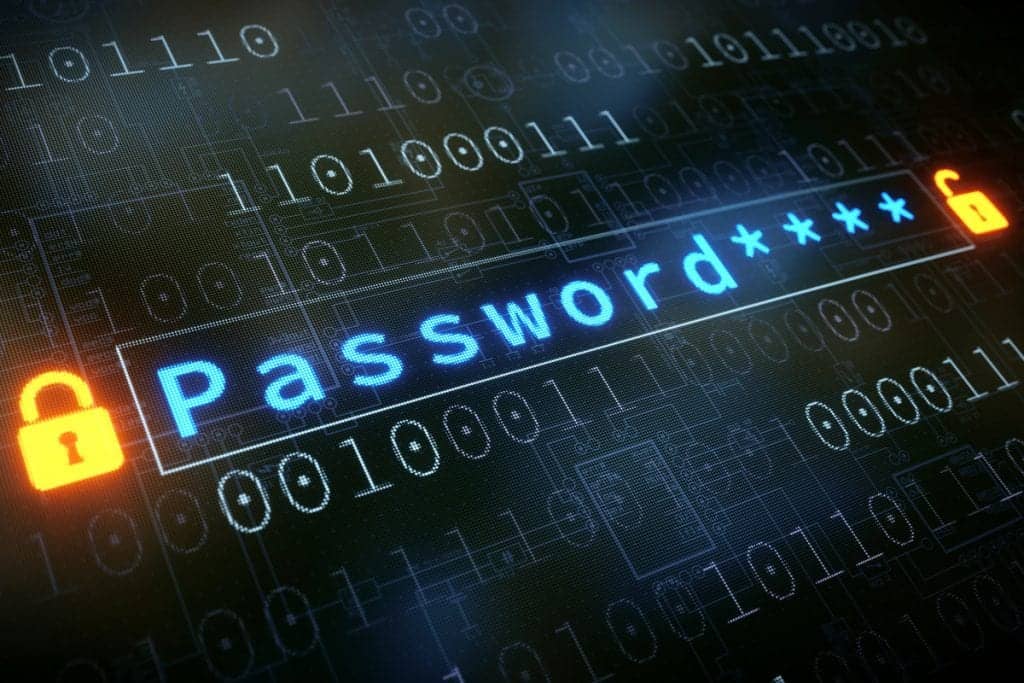Phishing is a cyber attack that uses fraudulent emails to trick employees into revealing sensitive information, while smishing uses deceptive text messages to achieve the same goal. These two threats represent the most common ways cybercriminals target businesses today, exploiting human trust to steal company data and financial information.
If your business falls victim to these sophisticated attacks, you could face devastating consequences, including financial loss, data breaches, regulatory fines, and permanent damage to your reputation. Every day you wait to implement proper cybersecurity measures puts your organization at greater risk.
At CMIT Solutions, we’ve protected businesses from these evolving threats for over 25 years. Our comprehensive security solutions combine advanced technology with expert monitoring to keep your company safe from cybercriminals.
Ready to strengthen your defenses? Contact us today for customized cybersecurity solutions that keep your business safe.
Phishing: The Email-Based Cyber Threat
Phishing is a deceptive cyber attack where criminals send fraudulent messages designed to trick recipients into revealing personal information, installing malware, or providing unauthorized access to company systems. These attacks have evolved significantly since their emergence in the 1990s, becoming increasingly sophisticated and harder to detect.
The attack typically begins when a scammer sends what appears to be a legitimate email from a trusted source, such as a bank, vendor, or even a coworker. The message creates urgency or fear, compelling the recipient to click on a malicious link, download an infected attachment, or respond with sensitive data like login credentials or financial information.
What makes phishing particularly effective is how these fraudulent messages manipulate human psychology. They exploit trust, create time pressure, and disguise themselves as communications from reputable organizations that employees interact with regularly.
According to the FBI’s Internet Crime Complaint Center, phishing was the most reported cybercrime in 2023, with around 300,000 reported incidents in recent years.
Types of Phishing Attacks Every Business Should Know
Knowing the different types of phishing attacks helps your team identify and respond to threats more effectively:
- Email Phishing: The most prevalent form where attackers send mass emails appearing to come from legitimate sources, often requesting password updates or account verification
- Spear Phishing: Highly targeted attacks that use personal information about specific employees to create convincing, personalized messages that are harder to identify as fake
- Whaling: Sophisticated attacks specifically targeting high-level executives and decision-makers to access sensitive corporate data or authorize fraudulent payments
- Clone Phishing: Criminals duplicate previously legitimate emails, replacing links or attachments with malicious versions and resending them as follow-up communications
Additional reading: vishing vs phishing
Real-World Phishing Examples and Business Impact
Hypothetical Scenario: An accounting firm employee receives an urgent email claiming to be from their primary software vendor. The message warns that their license will expire within 24 hours and provides a link to “renew immediately.”
Under time pressure, the employee clicks the link and enters their login credentials on what appears to be the vendor’s website. Within hours, the hacker has access to the firm’s client financial records.
Additional reading: what is cyber security
What Is Smishing? Text Message Phishing Explained
Smishing, derived from “SMS phishing,” involves cybercriminals who send text messages to mobile users in an attempt to steal personal data or install malicious software on devices.
Unlike traditional phishing attacks sent via email, smishing targets the growing number of mobile users who may be less cautious about text message security.
These attacks often bypass standard email security filters and reach employees directly on their personal or company-issued mobile devices, making them particularly dangerous for today’s mobile workforce.
The immediacy and personal nature of text messaging make these attacks especially effective. Most people respond to text messages more quickly than emails, giving them less time to carefully evaluate the legitimacy of the communication.
Additional reading: what is smishing
Common Smishing Attack Methods Targeting Businesses
Business-focused smishing attacks typically use several tactics to entice employees into falling victim:
- Financial Alert Scams: Messages claiming to be from the company bank or credit card provider, warning of suspicious activity, and requesting immediate verification of account details
- Prize or Lottery Notifications: Texts claiming the recipient has won a contest or lottery, requiring personal information or a small payment to claim the prize
- Emergency Messages: Urgent communications claiming to be from government agencies, warning of legal issues or security breaches that require immediate action
- Malicious Link Distribution: Simple messages containing shortened URLs that lead to websites designed to gather login credentials or automatically download malware onto the device
Why Smishing Is Particularly Dangerous for Mobile Workforces
With remote work and bring-your-own-device policies becoming standard, employees access company data from personal mobile devices that may lack adequate security protection. These devices often don’t have the same level of antivirus software or monitoring that company computers receive.
Mobile platforms also make it more difficult for users to verify the legitimacy of links before clicking them. The smaller screen size means URLs are often shortened or hidden, preventing users from hovering over links to see their true destination.
Additionally, mobile users are frequently multitasking or responding quickly to messages, reducing their attention to potential security threats. Research from cybersecurity firms shows that mobile users are three times more likely to fall for phishing attempts compared to desktop users.
⚠️ Company data accessed through compromised mobile devices can expose entire networks to cybercriminals, especially when employees use the same device for both personal and professional communications.
Additional reading: what is social engineering in cyber security
Smishing vs Phishing: Key Differences Every Business Owner Should Understand
The main difference between smishing and phishing is the delivery method: smishing attacks arrive via text message on mobile devices, while phishing attacks typically come through email to computer systems.
However, both threats share the same ultimate goal of tricking employees into compromising company security. Knowing these differences helps businesses implement appropriate protection strategies for both communication channels.
| Aspect | Phishing | Smishing |
|---|---|---|
| Delivery Method | Email systems with links and attachments | Text messages with malicious links |
| Target Devices | Primarily computers and laptops | Mobile phones and tablets |
| Detection Difficulty | Can be filtered by email security software | Often bypasses traditional security measures |
| Prevention Methods | Email filtering, employee training, and secure email gateways | Mobile device management, SMS filtering, and user awareness |
| Response Time | Users may take hours or days to respond | Often immediate response is due to the text message urgency |
| Information Gathering | Can gather extensive data through forms | Typically focuses on immediate credential theft |
Delivery Methods: Email vs SMS Attacks
Email-based attacks allow criminals to include detailed graphics, professional formatting, and multiple links or attachments that can make their fraudulent messages appear highly authentic. These messages can be easily forwarded, increasing their potential reach within an organization.
Text message attacks rely on brevity and immediacy. The character limitations of SMS force attackers to create concise, urgent messages that prompt quick action. While less detailed than email attacks, the personal nature of text messaging and the tendency for people to trust SMS communications can make these attacks equally effective.
Detection and Prevention Challenges
Organizations face unique challenges in detecting and preventing each type of attack:
- Email Security Limitations: While advanced email filters can block many phishing attempts, sophisticated attackers regularly develop new techniques to bypass these defenses
- Mobile Security Gaps: Many businesses lack comprehensive mobile security solutions, leaving devices vulnerable to smishing attacks and malware installation
- User Behavior Differences: Employees may be more cautious with email but less suspicious of text messages, creating inconsistent security awareness across communication platforms
- Cross-Platform Coordination: Attackers may use both channels simultaneously, making it difficult for security systems to identify coordinated attack campaigns
Don’t wait for a breach to happen. Contact us now and secure your business with advanced cybersecurity solutions.
Phishing vs Smishing: Impact on Business Operations
Both phishing and smishing attacks can severely disrupt business operations, but they often affect different aspects of the company’s infrastructure. Knowing these impacts helps businesses prepare appropriate response strategies and invest in the right protection measures.
Email-based attacks frequently target business processes that rely on email communication, such as vendor payments, client communications, and internal project coordination. When these systems are compromised, the entire workflow can be disrupted.
SMS-based attacks often affect mobile-dependent operations, including field service management, remote work capabilities, and executive communications.
Since mobile devices are increasingly used for accessing cloud storage, company applications, and sensitive data, a successful smishing attack can provide criminals with extensive access to business systems.
📌 In our 25+ years of experience protecting businesses, we’ve seen attack recovery times range from several hours for minor incidents to weeks for major breaches, depending on the scope of the compromise and the organization’s preparedness.
Financial Consequences of Successful Attacks
The financial impact of these cyber threats extends far beyond the immediate theft of funds or data:
- Direct Financial Loss: Unauthorized transactions, fraudulent payments, and theft of funds from compromised bank accounts
- Operational Downtime Costs: Lost productivity while systems are restored, employees are retrained, and security measures are strengthened
- Regulatory Fines and Legal Costs: Penalties for data breaches, legal fees for compliance violations, and costs associated with notifying affected customers
- Reputation Damage and Customer Loss: Long-term revenue impact from customers who lose trust in the organization’s ability to protect their information
- Increased Insurance Premiums: Higher cybersecurity insurance costs following a successful attack
- Recovery and Remediation Expenses: Costs for forensic investigation, system rebuilding, and implementation of enhanced security measures
Operational Disruption and Recovery Timeframes
When businesses fall victim to these attacks, the operational impact can be severe and long-lasting. Email systems may need to be taken offline while security teams investigate the breach, preventing normal business communication. Mobile device compromises can affect field operations, remote work capabilities, and executive decision-making processes.
Recovery timeframes vary significantly based on the attack’s sophistication and the organization’s preparedness. Simple credential theft incidents might be resolved within 24-48 hours, while complex attacks involving malware installation or extensive data compromise can require weeks or months of remediation effort.
Calculate the true cost of cyber attacks on your business with our IT downtime calculator. This tool helps you understand the financial impact of security incidents and plan appropriate protection investments.
Phishing and Smishing: Combined Threat Landscape
Modern cybercriminals increasingly use both phishing and smishing attacks as part of coordinated campaigns to maximize their success rate and gather more comprehensive information about target organizations.
These multi-channel approaches exploit the fact that most businesses focus their security efforts primarily on email protection while giving less attention to mobile device security. By attacking through multiple channels, criminals can verify information, build trust with victims, and increase the likelihood of successful fraud.
The combination of these attack methods creates a more convincing overall strategy that can fool even security-conscious employees who might be suspicious of a single suspicious communication.
Multi-Channel Attack Campaigns
A typical coordinated attack might begin with a phishing email that appears to be from a financial institution, informing the recipient that their account security has been upgraded. Shortly afterward, the victim receives a text message claiming to be a “security confirmation” from the same institution, asking them to verify the changes by clicking a link.
This sequential approach builds credibility because receiving communications through multiple channels makes the fraud appear more legitimate. Employees who might question a single email or text message are more likely to trust communications that arrive through both channels, especially when the messages reference each other.
Criminals may also use information gathered from one channel to make their communications through the other channel more convincing. For example, they might use details obtained through a successful phishing attack to create highly personalized smishing messages that reference specific company information or recent transactions.
Industry-Specific Targeting Patterns
Different industries face unique combinations of phishing and smishing threats based on their business models and communication patterns:
- Healthcare Organizations: Targeted with fake communications about patient privacy regulations, insurance updates, and medical equipment alerts sent via both email and text to administrative staff and medical professionals
- Financial Services: Face sophisticated attacks mimicking regulatory communications, client verification requests, and system security updates across all communication channels
- Legal Firms: Receive fraudulent communications about court filings, client emergencies, and regulatory compliance issues designed to create urgency and bypass normal security protocols
- Manufacturing Companies: Targeted with fake supplier communications, equipment maintenance alerts, and safety compliance notifications that exploit the time-sensitive nature of production operations
Every business needs strong protection. Contact us for comprehensive cybersecurity solutions tailored to your needs.
Protecting Your Business: Comprehensive Defense Strategies
Effective protection against phishing and smishing requires a multi-layered approach that combines advanced technology solutions with comprehensive employee training and clear response protocols. At CMIT Solutions, we’ve developed proven strategies that address both the technical and human elements of these cyber threats.
Our approach recognizes that technology alone cannot prevent these attacks because they primarily exploit human vulnerabilities rather than system weaknesses. The most sophisticated security software cannot protect against employees who unknowingly provide their credentials to criminals or install malicious applications on their devices.
Successful defense requires ongoing vigilance, regular training updates, and rapid response capabilities that can minimize damage when attacks do succeed. This comprehensive strategy has helped our clients reduce their cyber risk significantly while maintaining operational efficiency.
Technology Solutions and Security Measures
Implementing the right technology solutions provides the foundation for protecting your organization against both email and SMS-based attacks:
- Advanced Email Filtering: Deploy multi-layered email security systems that analyze message content, sender reputation, and attachment safety before allowing communications to reach employee inboxes
- Mobile Device Management (MDM): Establish centralized control over all mobile devices accessing company data, including the ability to enforce security policies, monitor for threats, and remotely wipe compromised devices
- Endpoint Detection and Response: Install comprehensive security software that monitors all devices for suspicious activity, automatically blocks known threats, and provides real-time alerts when potential attacks are detected
- Network Segmentation: Create separate network zones for different business functions, limiting the spread of malware and unauthorized access if one system becomes compromised
- Multi-Factor Authentication: Requires additional verification steps beyond passwords for accessing sensitive systems, making it significantly harder for criminals to use stolen credentials
Employee Training and Awareness Programs
Technology solutions must be complemented by comprehensive training programs that help employees recognize and respond appropriately to potential threats. Effective training goes beyond one-time presentations to include regular updates, practical exercises, and testing of employee knowledge.
Our experience shows that employees who receive regular, practical security training are significantly more likely to identify suspicious communications and follow proper reporting procedures. This human firewall becomes one of your organization’s most effective defenses against social engineering attacks.
Training programs should cover both the technical aspects of recognizing threats and the practical steps employees should take when they encounter suspicious communications.
This includes knowing how to verify the legitimacy of unexpected requests, knowing who to contact when they identify potential threats, and following established procedures for reporting security incidents.
See how we helped Optyx, a multi-location eyewear business, implement comprehensive IT solutions, including enhanced cybersecurity measures. Our integrated approach provided them with robust protection against cyber threats while supporting their business growth across multiple locations. Learn more about the Optyx success story.
Incident Response Planning
Every organization needs a clear, well-documented plan for responding to successful attacks. This plan should outline the specific steps to take when an employee reports a suspicious communication, when a security system alerts to a potential threat, and when an attack appears to have succeeded.
Response planning should include these critical elements:
- Immediate Containment Procedures: Steps to isolate affected systems and prevent the spread of malware or unauthorized access to additional resources
- Investigation Protocols: Methods for determining the scope and nature of the attack, including which systems may have been compromised and what data might have been accessed
- Communication Strategies: Clear guidelines for notifying stakeholders, customers, and regulatory bodies as required by law and company policy
- Recovery Processes: Detailed procedures for restoring normal operations while implementing additional security measures to prevent similar attacks
⚖️ Businesses with comprehensive incident response plans recover from cyber attacks significantly faster than those without proper preparation, based on our experience helping organizations recover from security incidents over the past 25 years.
How CMIT Solutions Protects Your Business from Phishing and Smishing
CMIT Solutions combines our 25+ years of cybersecurity expertise with cutting-edge technology and personalized service to create comprehensive protection strategies tailored to your business needs. Our approach goes beyond traditional security measures to provide proactive threat detection, employee education, and rapid incident response.
As a locally owned and operated business, we understand the unique challenges facing organizations in our community. We work closely with each client to develop security strategies that protect their operations while supporting their business goals and growth plans.
Our comprehensive protection strategy integrates multiple security layers with ongoing monitoring and support, ensuring your business stays protected as threats continue to evolve. This combination of technology, expertise, and personalized service has helped hundreds of businesses strengthen their security posture and avoid costly cyber incidents.
24/7 Security Monitoring and Threat Detection
Our security operations center provides continuous monitoring of your network, email systems, and mobile devices to identify and respond to threats before they can cause damage. This proactive approach allows us to detect suspicious activity, block malicious communications, and alert your team to potential security incidents in real-time.
Advanced threat detection systems analyze communication patterns, identify suspicious links and attachments, and monitor for indicators of compromise across all your business systems. When threats are detected, our team immediately takes action to contain them while notifying your staff of the potential risk.
This 24/7 monitoring capability means your business is protected even outside normal business hours when many attacks occur. Cybercriminals often time their activities to avoid detection, but our continuous monitoring ensures threats are identified and addressed regardless of when they appear.
Customized Security Solutions for Your Industry
Different industries face unique cybersecurity challenges, and our solutions are tailored to address the specific threats and compliance requirements relevant to your business:
- Healthcare: HIPAA-compliant security measures that protect patient data while ensuring medical staff can communicate effectively with patients and colleagues
- Financial Services: Advanced fraud detection systems and regulatory compliance support that meet stringent industry requirements while maintaining customer trust
- Legal Practices: Secure communication platforms and document protection systems that maintain attorney-client privilege while preventing unauthorized access to sensitive case information
- Manufacturing: Industrial network security and supply chain protection that safeguards proprietary information and maintains production efficiency
- Professional Services: Comprehensive data protection and client communication security that protects confidential business information across multiple client relationships
- Defense Contractors: CMMC compliance support and cybersecurity framework implementation that meets Department of Defense requirements while maintaining operational efficiency
Every industry has its own set of cybersecurity risks, from regulatory compliance to protecting confidential data. That’s why our solutions aren’t one-size-fits-all; they’re built to meet the exact security demands of your business environment, keeping your operations protected and efficient.
Strengthen your defenses with tailored cybersecurity solutions. Call (800) 399-2648 or reach out through our website to get started today.
FAQs
Is Smishing a Form of Phishing?
Yes, smishing is a specific type of phishing attack that uses text messages instead of email as the delivery method. While traditional phishing relies on email systems, smishing targets mobile devices through SMS messaging, making it particularly effective against today’s mobile workforce.
How Can Small Businesses Best Protect Against These Threats?
Small businesses should implement multi-layered security, including email filtering, mobile device management, and regular employee training. Working with experienced managed service providers ensures comprehensive protection without the need for dedicated in-house IT security staff.
What Makes These Attacks So Successful Against Businesses?
These attacks exploit human psychology rather than technical vulnerabilities, using urgency, fear, and trust to bypass logical thinking. Employees under pressure or distraction are more likely to respond without proper verification, especially when messages appear to come from familiar sources.
When Should a Business Contact Cybersecurity Professionals?
Businesses should contact our cybersecurity professionals immediately upon detecting any suspicious activity, receiving multiple suspicious communications, or experiencing any signs of system compromise. Proactive consultation before incidents occur provides the best protection and preparation.







